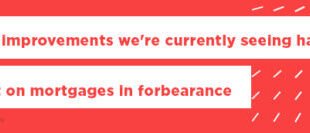After eight months of consecutive gains, the consequences of low inventory finally caught up with the housing market in February. Tightened supply was largely responsible for a 10.6% drop in the number of homes in contract from the prior month, according to new data from the National Association of Realtors, as reported by HousingWire.
Gradually increasing mortgage rates, heightened home prices and inventory levels at historic lows finally coalesced in February to depress in-contract deals. Although existing home sales dipped 6.6% in February, sales were still 9% higher than a year ago with just two months’ supply left to choose from. A healthy housing market is considered roughly six months of supply.

“Potential buyers may have to enlarge their geographic search areas, given the current tight market,” Yun said. “If there were a larger pool of inventory to select from – ideally a five- or a six-month supply – then more buyers would be able to purchase properties at an affordable price.”
However, at its current pace, many economists aren’t expecting a slowdown in prices or demand. More signs of an improving economy means more reason for families to look forward to a new home, a new state, and a bigger space. Stimulus checks and drops in unemployment means Americans are more likely to have been saving money, and there’s a strong possibility that once
the country fully reopens, those reserves will be unleashed on the economy.
“Only higher rates will result in more days on the market and thus larger inventory,” said Logan Mohtashami, HousingWire’s lead analyst. “We need these two things in order for buyers to have more choices and more reasonable price growth. Again, the question remains if rates will get high enough to have this effect on the market before more price damage is done. Right now home prices aren’t high enough to impact demand in a major way.”
Pandemic Reveals a New Era of Digital Lending
Amid this global pandemic, mortgage rates have been at historically low levels, borrower demand has increased, refis have broken records and lenders have had to shift in many instances to a remote workforce, as reported by HousingWire.
In addition to moving to a remote workforce, most face-to-face interaction with borrowers has either not been allowed to occur, or the borrower’s willingness to meet has declined dramatically. That has caused a remarkable shift to a digital lending model that has significantly impacted a lender’s ability to do business during these challenging times.
Record-low interest rates have driven home sales to a 14-year high and spurred a 200% annual increase in refinancing. While this boom in volume has generally been positive for primary mortgage originators, it has also exposed underlying weaknesses in their digital strategies that could create challenges down the road.
According to the J.D. Power 2020 U.S. Primary Mortgage Origination Satisfaction Study, mortgage originators’ shortcomings in self-service tools for application and approvals, frequent communication, and extended loan processing times could negatively affect customer satisfaction over time.

“It’s been a complicated year for the mortgage industry,” said Jim Houston, managing director of consumer lending and automotive finance intelligence at J.D. Power. “Between surging customer volumes on the origination side, an influx of customer inquiries on the servicing side, and a workforce that has been completely displaced by the pandemic, resources have been stretched to their limits.”
About 7 Million Refi Candidates Missed the “Forever Rate” Boat
According to HousingWire, even with today’s higher rates, over 1.2M people could wave up to $ 745 a month.
A 40-plus basis point rise in mortgage rates over the past month resulted in approximately 7 million high-quality refi candidates who are no longer able to lock “forever rates,” according to a recent report from Black Knight.
But on the news that mortgage rates jumped to 3.17% last week, Black Knight reported that there are now just 11.1 million “high quality” refi candidates. That is the smallest number of potential refi candidates in a year. For Black Knight, these candidates are defined as a 30-year mortgage holder with a maximum 80% loan-to-value ratio and credit scores of 720 or higher.
Lenders need the stars to align on some of the dwindling number of candidates. But if they do, the average homeowner could potentially save almost $ 300 a month through a refinance. Roughly 2 million of these candidates could save over $ 400 a month, while another 1.2 million could save upwards of $ 745 each month, Black Knight said.
Disregarding Black Knight’s eligibility criteria, there are almost 19 million 30-year mortgage-holders who are “in the money,” with current interest rates at least 0.75% above today’s rate.
Even years that don’t swell like 2020 bring in millions of potential refi borrowers, but the demand witnessed last year requires historically low rates. And the industry isn’t expecting them to drop back down anytime soon.
Assuming a 45-day lock-to-close timeline, Black Knight’s rate lock data from mid-February suggests refi activity could remain relatively steady this quarter before recent rate spikes begin harshly impacting closed loan volumes.
Weekly Mortgage Rate Update
Although mortgage rates remain low, we are beginning to see a pullback by those looking to enter the housing market.
In fact, homebuyer demand has gone from 25% above pre-COVID levels at the start of the year, when mortgage rates hit record lows, to 8% above pre-COVID levels today. We even see that purchase demand is diminished today as compared to late May and early June of 2020, when mortgage rates were the same level.
This is confirmation that while purchase demand remains strong, the marginal buyer is feeling the affordability squeeze resulting from the increases in mortgage rates and home prices we’ve experienced in recent months.
The Freddie Mac weekly survey shows the average rate for a 30-year fixed mortgage is 3.18%, which is 0.1 point higher than last week, and down 0.15 points from this time last year.



